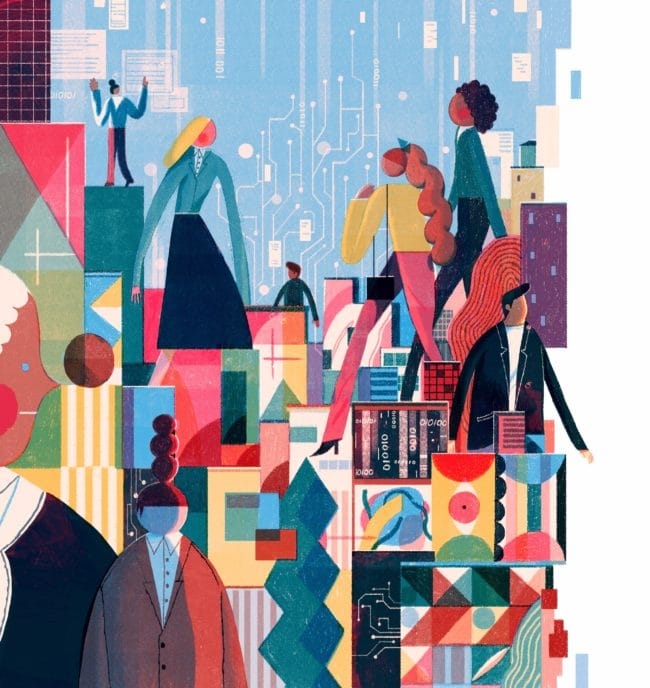In a six-week stretch, three notable incidents highlighted the continuing struggle to diversify workplaces: A male Google engineer wrote a memo bashing the company’s outreach to women and minorities, claiming programs like coding camps for girls and internships for students attending historically black colleges and universities have led to “discriminatory practices.” A California state senator said she would craft an amendment to the state’s Civil Rights Act to include protections for entrepreneurs dealing with venture capitalists after female entrepreneurs went public with tales of sexual harassment by male VCs. The New York Times published an article about the dearth of female CEOs, concluding—based on interviews with executives, headhunters, business school deans and human resources professionals—that women continue to face entrenched barriers and biases in the business world.
For many entrepreneurs and tech/venture capital veterans, this was old news. Inequity in these fields—manifested not only in unequal treatment but also in abusive behavior toward women and minorities—has existed for years.
“If you had asked me four decades ago where we’d be today—would we see so few women at the most senior levels of business—I would have said, ‘No, of course not,’” says Katherine Klein, the Edward H. Bowman Professor of Management and vice dean of the Wharton Social Impact Initiative. “I would have thought we’d be much farther along.”
This past spring, the Kapor Center for Social Impact released the results of a survey that asked more than 2,000 people who had left technical jobs between 2013 and 2016 their primary reason for departing. More than a third—37 percent—cited unfairness or mistreatment, with women, African-Americans and Hispanics more likely to leave for those reasons.
But there are new efforts to make lasting change, many led by Wharton alumni who are helping women and minorities prepare for, enter, and thrive in tech jobs, using education, outreach, and networking to do so. The bigger challenge, though, is tearing down the architecture of bias and rebuilding piece by piece.
“The best approaches emphasize changing not only the players, but also the game,” says Stephanie J. Creary, a Wharton assistant professor of management. “Focusing on skill development and competence alone places the burden for driving organizational change on women and minorities. Yet development programs, paired with cultural change initiatives designed to create more inclusive organizational systems, work practices, structures, and norms, can be much more impactful.”
The first step in leveling the playing field is often noticing the disparities in the first place. Wharton Associate Professor Ethan Mollick’s recently published study concluded that female entrepreneurs can be overly humble, while male entrepreneurs tend to be hubristic. Penn Wharton Entrepreneurship Managing Director Clare K. Leinweber says that research and student feedback prompted changes to the student startup incubator, the Venture Initiation Program (VIP).
“I would argue that it might not be only about humility, but perhaps about realism. Women may more accurately assess real risks,” Leinweber says. “They may have been more likely to talk themselves out of applying for VIP as ‘not ready.’”
Until 2016, students were expected to have “a significant amount of traction” when they submitted applications, which happened once per semester, she says. Now, the application process is ongoing, and a “community” track was created to scale resources across more members. In 2015-’16, 28 percent of VIP participants were female; that figure increased in 2016-’17 to 43 percent, a number that reflects the Wharton MBA student population. “When people see that people who look like them are starting businesses, it’s easier for them to say, ‘Oh, I can do that,’” Leinweber says.
What begins at Wharton carries over into the workplace. The London-based TechMuses, co-founded by friends Lynn Yap WG10 and Vinita Chhay WG10, in part operates on a similar principle. At its heart, it’s a mentorship program aimed at underprivileged girls ages 13 and 14, partnering them with strong, successful women role models working in technology, science, and business.
“Research shows that girls that age can still change their mind-sets,” says Yap. “We offer experiential learning and break down the stereotype or societal image of what a woman who works in science or runs her own company looks like.”
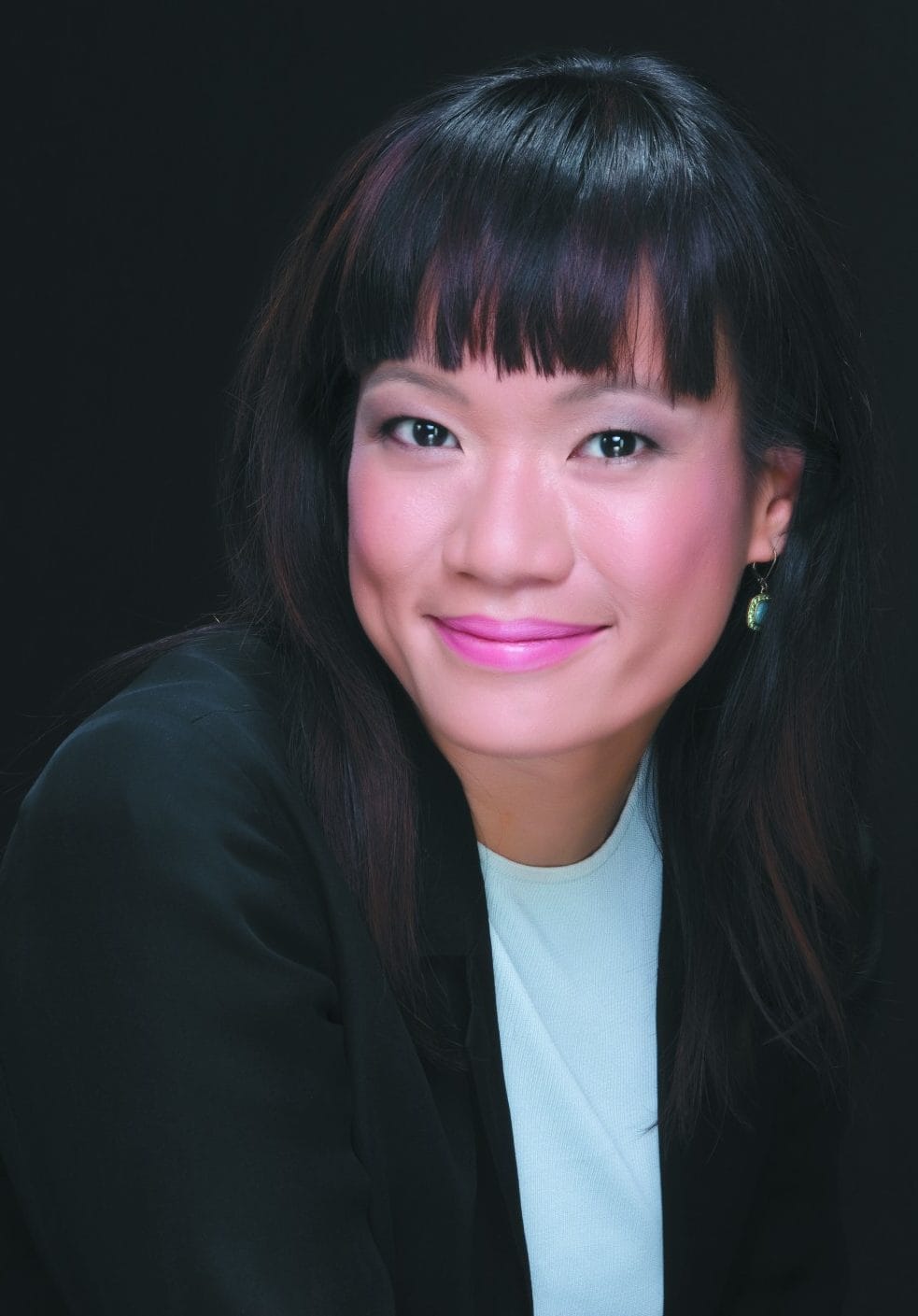
Lynn Yap WG10, co-founder of TechMuses.
Yap noticed the lack of female entrepreneurs and technologists around her when she was part of the New York and London startup scenes. She also found that some investors weren’t able to understand a product designed for women and thus immediately tuned out during a pitch. Chhay, who grew up in France, was encouraged to focus on literature, not math and science, in school, even though she had similar grades in all those subjects and wanted to pursue a scientific career. During the first months of her MBA program, she says, “Some students would say to me, ‘It must be the English scores that gave you a good GMAT score.’ Was it because I was female?”
Girls taking part in TechMuses’ one-year program visit their mentors’ workplaces while also learning soft skills such as storytelling and negotiation. They take part in activities that encourage creativity and build confidence. “It’s experiential learning, as opposed to academic skills like coding, which is what they learn in school and in extracurricular activities,” Yap says.
While it’s difficult for the organization to quantify its success right now— “You can’t measure confidence levels,” Chhay says—feedback metrics similar to Net Promoter Score and anecdotal evidence both suggest it’s been effective.
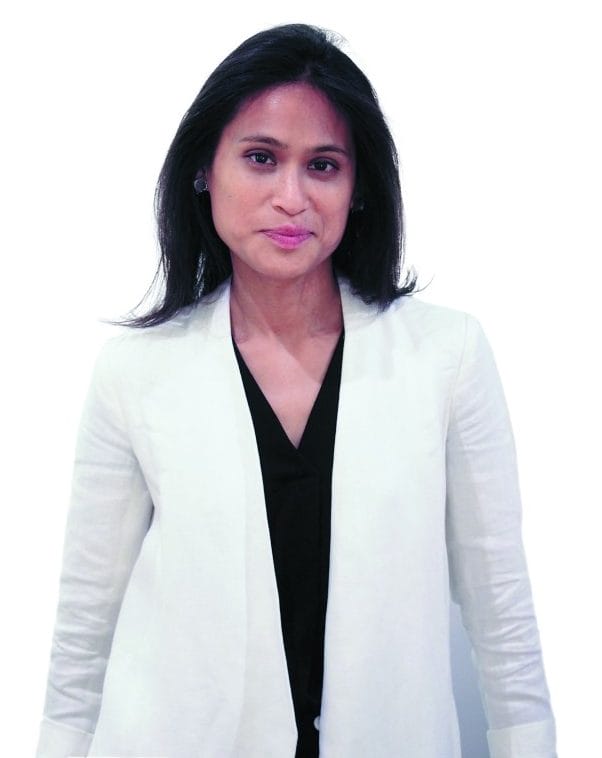
Vinita Chhay WG10, co-founder of TechMuses.
One TechMuses alumna was an average learner whose brothers’ educations took priority in her family; she eventually became her class’s top student. “Her mentor says all it took was a little encouragement and someone to listen, someone she could look up to and model herself on,” Yap says. “We helped her see she could be something else, something bigger than she sees herself as right now.”
Women in tech are also challenged with how other people see them. In 2014, Nancy Wang C11 GEN11 ENG13 began working at Google as a product manager, responsible for product direction, strategy, and development. At one meeting, external partners didn’t believe she was there to represent Google and refused to get started. “They thought I was the secretary,” Wang says. “Even within my own company, I often felt I had to be more assertive around the conference table to get the same level of recognition and support for my projects from leadership.”
In January, Wang partnered with Deepika Yerragunta WG17 to found Advancing Women in Product (AWIP). While the San Francisco-based nonprofit specifically focuses on product managers, its goal is to address the gross gender imbalances in many Silicon Valley companies, particularly at the early- and mid-career levels. An Equal Employment Opportunity study released in 2016 found that of high-tech executives, about 80 percent are men and 20 percent are women. By contrast, in the overall private sector, men hold about 71 percent of executive roles, while women hold 29 percent.
“I’m in a company where I’m the only female among seven product managers,” says Wang, lead product manager for the unicorn data management startup Rubrik. “That mirrors my time at Google, where I was the only female product manager on the 40-person network/data infrastructure team. It hurts inclusion when society tells women that they can’t do back-end systems, or that they’re bad fits for products roles that don’t have design or consumer elements.”

Deepika Yerragunta WG17 (left) and Nancy Wang C11 GEN11 ENG13, co-founders of Advancing Women in Product
Since its January launch, AWIP has hosted résumé workshops and invited industry leaders—like Amanda Moore, group product manager at Google Maps—to share career advice with its quick-growing membership, which is currently about 700. Top Silicon Valley executives and venture capitalists from companies like Dropbox, Pinterest, and Bain Capital Ventures have pledged to support AWIP. “What keeps us excited about AWIP is the overwhelmingly positive feedback we get from our members,” says Yerragunta, a senior product manager at Amazon Alexa who also runs her own international fashion startup. “When your members tell you, ‘This is the most I’ve gotten from a panel’ or ‘I never thought I would find a supportive community for women PMs like this,’ it makes all the work we put in on the late nights and weekends worth it.”
Wang and Yerragunta are also using their industry connections—including to Amazon, Intel, and Marketron—to build a solid job pipeline for female product managers. “We decided that we can’t actually close the gender equity gap if we don’t have more men on our side,” Yerragunta says. “I have a lot of guy friends who are interested in hiring women, but they just don’t know enough of them. Simply introducing really smart tech women to men who are hiring managers can make a difference. Men in tech generally tend to gravitate toward each other—inviting each other on Vegas trips, Napa outings, and happy hours at sports bars to discuss work. It’s not always that we’re intentionally excluded, but that they don’t always feel comfortable inviting women.”
Thus far, AWIP has helped members land more than 50 interviews with leading companies that include Facebook, Amplitude, and Evernote. Groups in Seattle and Boston have asked about syndicating its model. The ultimate goal may take time, but the founders are hopeful.
“Within the next 10 years,” Yerragunta says, “we want to see more faces like ours—whether that means minorities, women, or both—in and out of the boardroom.”
Matt Stephenson WG11 faced realities in the working world before and after he earned his MBA that brought home the challenges women, people of color, and those from low-income communities face. That prompted him to co-found Code2College with his wife, Kathleen Overly GRD12, in 2016. The nonprofit organization provides students from those under-represented communities with in-demand technical and professional skills taught by corporate volunteers, along with access to high-paying coding internships. “I wanted to create opportunities for students who weren’t on the trajectory for access to college and in-demand careers,” Stephenson says.
Before Wharton, Stephenson worked with the New York-based nonprofit Sponsors for Educational Opportunity, which offers education and career programs to underserved young people. “At SEO, I worked with hundreds of students who were hungry but lacked a certain level of access,” he says. “A Kennesaw State student with a 3.9 in finance who could go toe-to-toe with anyone from a top-tier school may not otherwise have a chance to work in a back-office role at one of the bulge-bracket investment banks.”
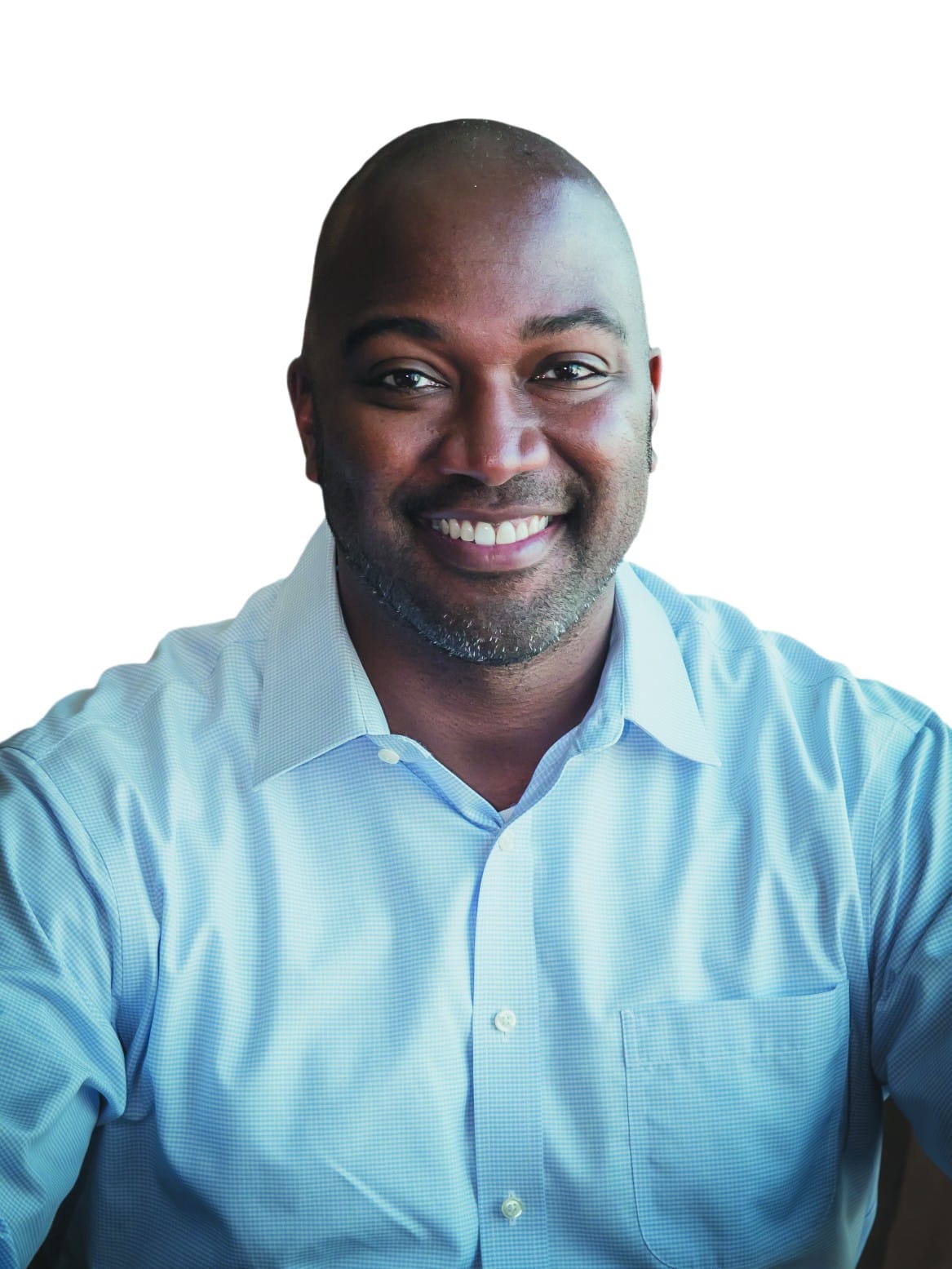
Matt Stephenson WG11, co-founder of Code2College
After completing his MBA, Stephenson taught Algebra II at Achievement First Amistad High School in Connecticut. He was the only AfricanAmerican male teacher, and one of three teachers of color on a staff of more than 50. Students were surprised to have a teacher who was not only a minority but had also been a professional in the finance industry. (Stephenson had worked for Goldman Sachs.)
He made it his mission to add economic and financial management lessons to his classroom curriculum—information his students’ more affluent peers would be learning. He also introduced his students to “Mathematical Moguls”— people of color who excel at math, including Tristan Walker, CEO and founder of Walker & Co. Brands; Mae Carol Jemison, the first female African-American astronaut; and Carlos Slim, the Mexican business magnate.
“I realized very quickly that exposing my students to different industries and introducing them to successful professionals who look like them had a tremendous impact on their intrinsic motivation and self-perception,” Stephenson says. “I also realized that it was critical for me to drive these experiences for many more students and truly scale this impact.”
Code2College is based in Austin, Texas, where it seeks to bridge the large underserved student population and the many companies operating within the city’s tech ecosystem. To build its first class, the program partnered with two schools and had 30 students—90 percent students of color and 70 percent female. Those in the initial cohort ranged from students already familiar with coding to those who had never typed a line of code in their lives. Eschewing a traditional lecture model, the curriculum is hands-on: Each hour-long session consists of seven minutes of instructor talk time and 53 minutes of student work. “You give them just enough so they can struggle and figure it out on their own,” Stephenson says. “That’s what makes the content really stick.”
Stephenson enlists tech sector professionals, who voluntarily teach at partner schools. Other Wharton grads have also pitched in: Lander Coronado-Garcia WG11 has been a workshop mentor and volunteer recruiter; Jeanine Henry WG11 served as a board member while leveraging corporate resources through her employer, Facebook.
Code2College also emphasizes hands-on experience through a monthly workshop hosted by a local corporate office, like Facebook or RetailMeNot. Students focus on developing professional skills and delve into a “career exploratory activity”: One group went to Facebook and was presented with an app design challenge, giving members a strong skills-based addition to their résumés and technical projects for prospective colleges or employers to review.
“This year we placed two students in software engineering internships where they worked alongside college interns and full-time employees,” Stephenson says. “This is just the beginning.”
Golden Seeds, a firm that has invested in women-led companies, is spearheading diversity in the venture capital world. Twelve years after launching, the angel investment group is celebrating a milestone: more than $100 million in investments in 143 companies that went on to raise more than $750 million in additional capital.
“This is putting money where your mouth is,” says Mindy Posoff WG86, a managing director of Golden Seeds. “Our investment thesis is that funding companies with gender diversity in the C-suite leads to better companies and makes for a better investment.”
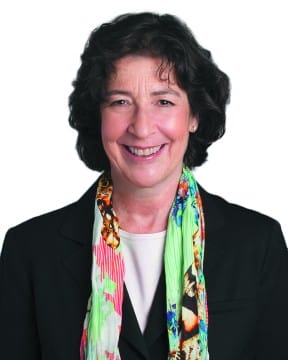
Mindy Posoff WG86, a managing director of Golden Seeds
Professor Mollick agrees. “We know diversity increases innovation,” he says. “The fact that women aren’t getting funding suggests we’re missing amazing innovations.” Mollick’s recent research found evidence of homophily—that is, funders’ preferences for people similar to them. It’s the “birds of a feather” axiom in action.
In March, Fortune reported that venture capitalists invested $58.2 billion in companies with all-male founders in 2016. By comparison, companies run by females received $1.4 billion. Fewer female-led projects are funded, and when they are, they receive less on average than male-led projects. “The mean person who gets money is a male Stanford grad,” Mollick says. “Either they have all the good ideas or we’re not funding the right people.”
A recent study co-authored by Wharton Assistant Management Professor Laura Huang, Columbia Business School doctoral fellow Dana Kanze W01, and two co-authors from Columbia University found that homophily isn’t the only reason for the funding gap. That is to say, the funding gap won’t close if more women become venture capitalists.
“We’ve seen the gender gap in venture funding widen slightly over the past few years as the percentage of female VCs has increased, suggesting that other factors may be contributing to the disparity,” says Kanze. “Our research points to the presence of implicit gender bias.” The researchers analyzed questionand-answer interactions between 189 entrepreneurs and 140 prominent venture capitalists at TechCrunch Disrupt competitions. The analysis found male entrepreneurs were asked about the potential for gains, referred to as “promotion” orientation, while women were asked about the potential for losses, or a “prevention” orientation. The bias held with both male and female funders and predicted the variance in entrepreneurs’ funding outcomes: Those asked predominantly promotion questions went on to raise seven times more funding than those asked prevention questions.
The good news, Kanze says, is that how the entrepreneurs reacted to the questions affected the outcome. Those who responded to a prevention question with a promotion answer went on to raise 14 times more funding than those who matched prevention with prevention.
“As women defy the stereotype of what success looks like in this environment, they are penalized with prevention questions in a setting where promotion is favorable,” Kanze says. “In the near term, I’m happy to see that women can do something about it by reframing their responses. Over the longer term, I’m hopeful we’ll see improvement in investors’ decision-making processes.”
All of these Wharton change-makers agree that the needle is moving in the right direction, albeit slowly. While there’s still much work to be done, they hope to one day be seen as pioneers of sorts—leaders in an era that began to see a lasting difference for women and minorities in entrepreneurship, tech, and venture capital. Code2College’s Stephenson also sees this as a time when the perception of his alma mater is evolving.
“People from outside of the community, when they think of Wharton, they think finance,” he says. “If I had to ally the School with anything, it would be social impact. Wharton alumni are in the business of changing people’s lives for the better.”
Natalie Pompilio is a Philadelphia-based writer whose new book is Walking Philadelphia: 30 Walking Tours Exploring Art, Architecture, History, and Little-Known Gems.
Published as “Equity Investment” in the Fall/Winter 2017 issue of Wharton Magazine.
EDITOR’S NOTE: Do you have thoughts on how Wharton can best prepare student entrepreneurs to recognize and address bias in their careers? Take this brief Penn Wharton Entrepreneurship survey and share your feedback.




















